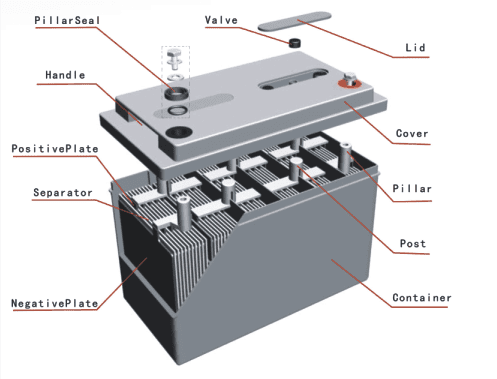A brief history of the development of lead-acid batteries
A brief history of the development of lead-acid batteries
The lead-acid battery was created by the Frenchman G.Plante. Samples were sent to the French Academy of Sciences in 1860. At that time, the battery was the only new thing in the laboratory. It was not until 13 years later (in 1873) , the DC generator came out, and the lead-acid battery gradually became practical.
In 1881, the Frenchman Faure invented the use of lead compounds to coat lead sheets, which can quickly form active substances.
The Englishman Sellon invented the lead-antimony alloy grid. This grid was combined with the Fuer powder coating method, and the so-called paste-coated plate appeared. This production method is simple, feasible and convenient for production.
Since 1910, the production of lead-acid batteries has been driven by two major driving forces. One is that automobile batteries have begun to be used for starting, lighting, and ignition; Batteries used for many years. Since then, lead-acid batteries have been used in automobiles, motorcycles, railways, mining, communications and other fields.

The timeline of the development of lead-acid batteries
- 1860
Plante (G.Plante) realized the first lead-acid battery using dilute sulfuric acid as the electrolyte to form an active material from the lead plate by repeated charging and discharging.
- 1873
The advent of the DC generator, the lead-acid battery has since had a reliable power supply.
- 1881
Sellon invented the lead-antimony alloy grid; Faure invented the method of applying paste on lead to form active substances.
- 1882
Cladstone and Tribe proposed the vulcanization theory and established the accepted chemical reaction formula.
- 1883
PbO2+Pb+2H2SO4=2PbSO4+2H2O.
- 1886
Udor and Lucas completed a convenient method of forming positive plates (electrolyte plus etchant).
- 1910
Exide Corporation introduced tubular positive plates. ( CLICK HERE for searching the tubular battery gauntlet)
- 1935
Haring and Thomas invented lead-antimony alloy grids; Slegler invented glass fiber tubes to replace the hard rubber tubes previously used for tubular plates.
- 1970
Deviff created the first valve-regulated battery with a lean liquid structure.
- After 1970
A pull-mesh grid appeared. Micro-porous PE separators and PVC separators. Monolithic through-wall welding technology. All addition and tin addition of lead-calcium alloys.
-- End --
